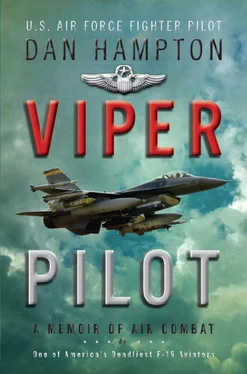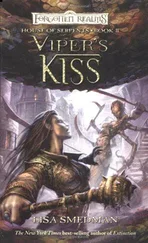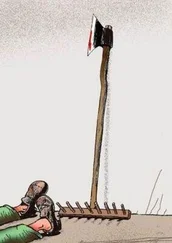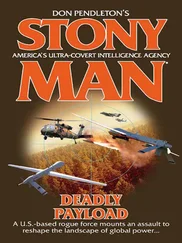IT WAS TIME FOR THIS STORY. NO GRAND DESIGNS OR PHILOSOPHICAL FLUFF—just an honest view of life and war from one fighter cockpit. The modern military would have you believe that everyone is a warrior. That everyone is out there fighting enemies, taking chances, and killing threats. But it’s just not so. The Air Force alone deployed about 65,000 people for the second Gulf War, and there were only 450 active, flying fighter pilots. That’s a 144:1 ratio of support personnel to shooters. Most military folks serve a vital purpose, and fighter pilots wouldn’t get far without them, but the vast majority are not fighting men. That’s simply the way it is. The Air Force, in particular, needs to remember that and keep labels like “warrior” in their proper place.
Fighter operations, and especially Hunter Killer missions, are not a series of logistical challenges. It’s a violent form of combat moving along at hundreds of feet per second with just fractions of moments to react or die. It’s also solitary. There may be other jets flying with you, but in the end, you’re alone. No armored fighting vehicles and no platoon of heavily armed buddies to watch your back. Most of my 151 combat missions were so deep into enemy territory I had no hope of rescue if I was to go down.
Combat is not the ultimate test, but it is one of them. Men have been tried this way since the dawn of time, and many have failed. There is no way to prepare for it. You can be trained to fight, to handle weapons and sophisticated equipment. You can be taught to survive, to resist interrogation, and to kill. But you never really know until you’re there. And in the end, you either have it or you don’t. If a man can’t cut it, then I believe he bears a terrible burden the rest of his days. Thankfully, this is a weight I won’t carry.
I made a difference. I could see the Hunter Killer version of the Viper way back in 1992. I knew it was right and I saw what was needed. Despite the skeptics, everything we pushed for eventually came to fruition. When F-16CJs are in the news today, and I see the pods and weapons slung under their wings, I grin. I helped make it happen, and no one can take that away.
I LOVED BEING A FIGHTER PILOT, BUT EVENTUALLY YOU HAVE TO STOP. Physically, anyway, if not mentally. I repaid the Air Force for the skills I’d been taught and the opportunities I’d been given. I paid back those who’d believed in me. I wanted to go out as I’d lived my career—on my own terms. And I did. Perhaps if the Air Force was made up of guys like MooMan, Kanga, and Storm’n, I would’ve stayed.
Perhaps not.
No one really ever comes back from war. Not all the way. Memories can be compartmentalized, put away in a dark place, and rarely, if ever, visited. Some men are better at this than others. I never killed a noncombatant or a child. Those whose lives I ended were trying to kill me, and they had their chance to do the same. At least we faced off like men and took our best shots. They missed, I didn’t.
Like many fighting men, I was comfortable in combat. Not that it’s a nice place to be, but I could deal with it. In a way quite unlike everyday life, it made sense, and I knew what I was doing. Combat is simple—you live or die. It’s life that’s complicated, and you either cross your own Rubicon and get to the other side someday or you do not.
After twenty years of tactical flying and several wars, it’s impossible not to have proud memories—and a few regrets. In the end, each man must decide for himself what to keep and what to let go. In my case, I’ll always be able to look at myself in the mirror and know that when it counted, I flew honorably with brave men.
I flew with the Wild Weasels.

Undergraduate Pilot Training graduation, 1987. Welcome to the USAF.
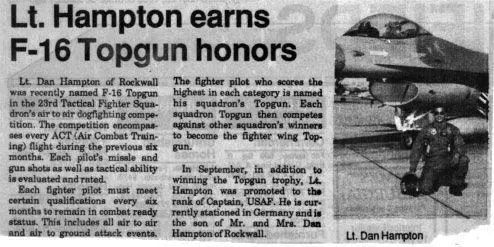
TopGun clipping. All fighter wings have these competitions, and this was my first win.
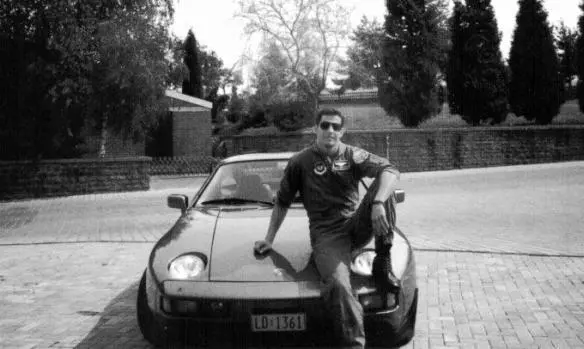
Germany, 1990. Every bachelor fighter pilot should have a fast car. This Porsche became my favorite toy—next to an F-16, of course.

Inbound SCUD missile being destroyed by a Patriot battery at the start of Desert Storm, 1991.

23rd Tactical Fighter Squadron “Fighting Hawks” Hunter Killer team ready for takeoff in the first Gulf War. (See chapter 3.)

French-built “indestructible” bunker used by the Iraqis and destroyed courtesy of the U.S. Air Force.

After the first daylight raid into Baghdad during Desert Storm.

Self-portrait during a surface-to-air-missile (SAM) hunt in northern Iraq, 1991.

Blood chit. If we were shot down over enemy territory, these were used to tell any locals that we were the “good guys,” and if they helped us to safety they’d be well paid.

Beni Suef, Egypt, 1992. A shot of me during my exchange with the 242nd Tactical Fighter Wing of the Egyptian Air Force. (See chapter 4.)
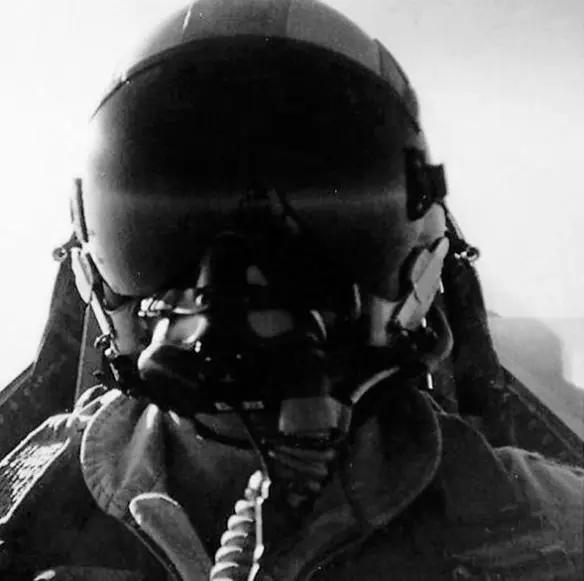
Above: Leading a mission into Iraq, 2003. We were the first over the border in Operation Iraqi Freedom. (See chapter 7.) Below:

Inside the F-16CJ cockpit.

A shot of me leading a four ship following a strike into Iraq, 2003. Note the empty weapons pylons under the wings. The picture was taken by a friend from inside the air-refueling tanker.
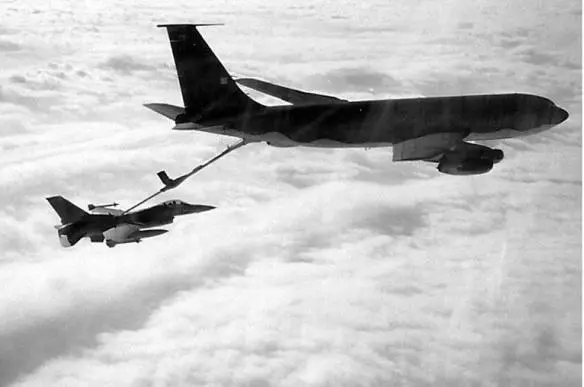
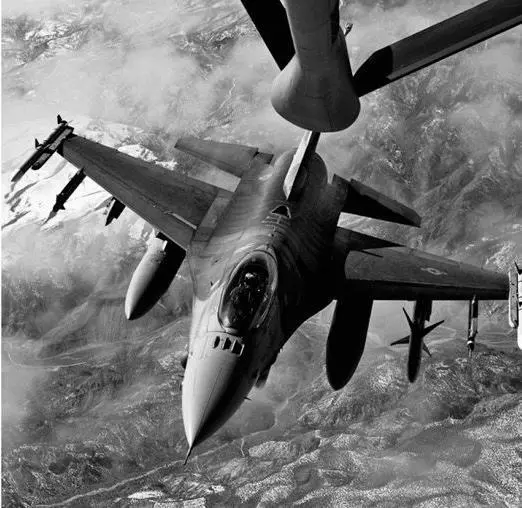
Air refueling is absolutely essential for fighter combat operations, as we burn up fuel very quickly.
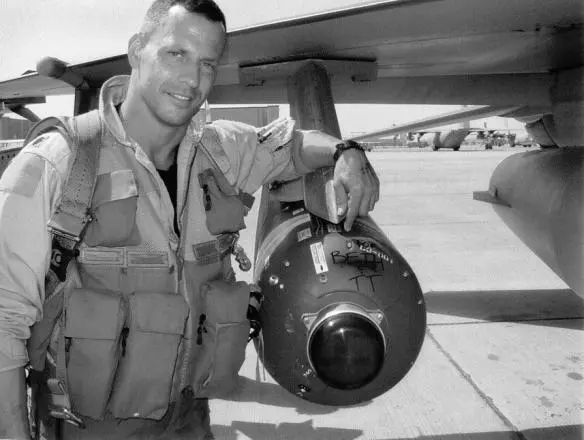
With my favorite SAM-killing weapon—the cluster bomb. This one is personalized for my wife and daughter; it killed an anti-aircraft artillery nest.

Baghdad reeling from Shock and Awe, 2003.
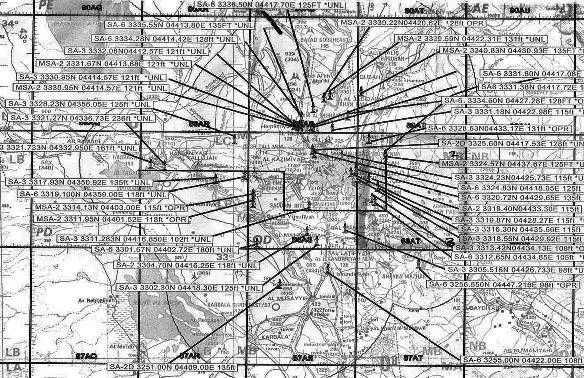
A map of the known SAM sites around Baghdad in the early days of the second Iraq War. There were at least as many “unlocated” sites. In any event, it was our job to kill them all.
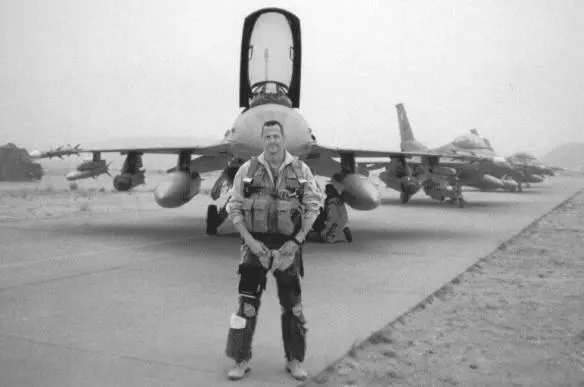
In Kuwait following the Nasiriyah mission. I tried to save some surrounded Marines by strafing an Iraqi armored column that had cut them off. The haze is left over from a gigantic sandstorm. (See the prologue and chapter 8.)

Me and LTC Scott “Zing” Manning—call sign ELI 33—after we destroyed Saddam Hussein’s escape helicopters in Baghdad, April 7, 2003. (See chapter 11.)
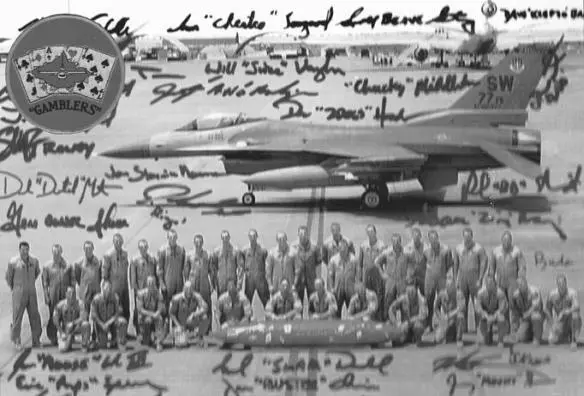
77th Fighter Squadron “Gamblers” at Prince Sultan Air Base, Saudi Arabia, 2003. We were going home the next day! That’s the Gamblers’ patch in the upper left: “All Aces, No Jokers.” Along with the 23rd Fighting Hawks, with whom I served in the first Gulf War, these were the finest fighter squadrons in the USAF.

After the SAMbush mission in Baghdad. Note the dark stains around the 20-mm cannon port over my head from repeated strafing. (See chapter 10.)
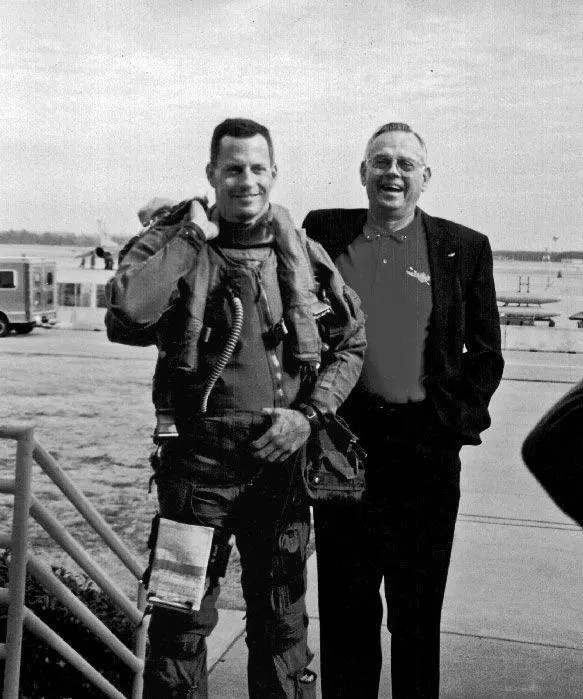
Like father, like son… Me and my dad, Colonel Dan Hampton, USMC (Ret.), A-4 Skyhawk attack pilot.

It’s impossible not to look good next to a hot fighter jet and a hot woman—my beautiful wife, Beth.
Читать дальше
